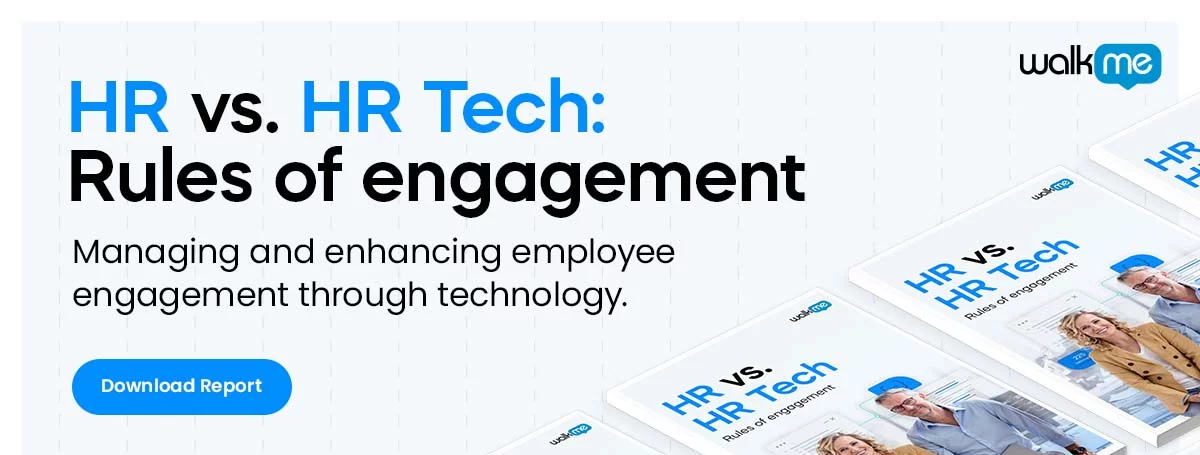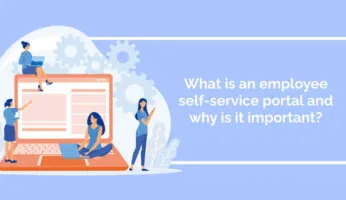
Software is an investment, and that’s why every business needs a structured software adoption process to make sure users can learn that software as quickly as possible.
This holds true for organizations that implement in-house software, as well as companies that build apps for the marketplace.
In either case, if you want to maximize the bottom-line ROI of that software, it is crucial to simplify onboarding, training, and adoption.
Check out this article for tips on how to create a better software adoption process.
Why Is a Software Adoption Process So Important?
Nearly one in four users abandon mobile apps after only one use. The statistics for other types of applications, such as web apps and enterprise-grade SaaS platforms, will naturally vary – but this data point highlights the importance of improving software adoption rates.
If you don’t have the right processes in place, this can lead to:
- Higher user churn
- Lower user productivity
- Less engagement
- Longer time-to-competence
On the other hand, a well-structured, effective software adoption process can result in:
- Users who are happier and more engaged
- Greater user proficiency and performance
- Increased engagement, productivity, and retention
- Greater lifetime value for customers
- Greater ROI for in-house software investments
In short, a structured adoption process is essential for any company whose bottom line depends on effective software use – regardless of whether the software users are in-house employees or customers.
3 Tips for Creating a Structured Software Adoption Plan
Creating a structured software adoption plan can help your organization move beyond the “trial and error” phase of implementing new technologies.
Here are a few ways to take the guesswork out of software adoption planning:
Learn the key steps in the adoption process
For software adoption to be successful, it needs to be a well-structured, well-designed plan that focuses on the right things. You can’t just set people free into a world of software and hope they’ll adopt it.
Instead, it’s important to:
- Create a user persona
- Understand the user journey
- Map that pathway out with a user journey map
- Optimize each stage of that journey
When it comes to software adoption, there are a few important stages to pay attention to:
- Initial onboarding
- Software training
- Long-term support
By improving each of these areas, it is possible to reduce friction, increase engagement, and ultimately improve adoption rates.
Create a good impression by simplifying the adoption experience
The sooner a user has a good understanding of what a product or service does, the sooner they’ll become engaged and productive.
One of the biggest barriers to that productivity, however, is complexity and learning.
The more people are required to learn, the greater their cognitive load.
There are several factors that contribute to this increased mental effort, such as:
- The usability of a software platform
- How complex the tool is
- The relevance of the training content
For instance, training that is contextualized and personalized provides content that is immediately relevant and useful in the moment.
Digital adoption platforms (DAPs) are examples of platforms that use features such as software walkthroughs and chatbots to deliver just-in-time training that is immediately relevant. Since users don’t need to waste time searching for and wading through content that isn’t relevant, they expend less mental effort.
The result: increased engagement, productivity, and satisfaction.
Set goals and objectives, then track them with analytics
To actually achieve specific goals, it’s first necessary to clarify what those aims are, then translate those goals into objectives and metrics.
When designing a software adoption process, it is useful to focus on objectives such as:
- Time-to-competence
- Abandonment/churn rates
- User satisfaction rates
- Overall productivity
Metrics such as these, in turn, can be used to gain insight into the financial impact of the adoption plan. They can also help adoption specialists, such as digital adoption managers, understand what works, what doesn’t, and make improvements.
For example, adoption managers may want to increase user engagement and retention.
Here is an illustration of what an onboarding strategy could look like:
- To improve engagement during onboarding, adoption specialists create product tours and software walkthroughs that introduce app features
- To track the effectiveness of this approach, the adoption team tracks metrics such as user abandonment, technical support queries, complaints, and user satisfaction surveys
- With that data in hand, they can make improvements to the process and track its impact on the strategic goals mentioned above, such as user retention
Every software adoption strategy should naturally be tailored to fit the needs of the organization, the application in question, and so forth.
Takeaway
An adoption strategy that forms part of the employee onboarding process, for instance, will look different from a strategy designed to improve adoption for a customer-facing application.
Ultimately, however, digital adoption is a fundamental process in any organization, whether we are discussing in-house adoption for the enterprise or user adoption for app developers – both types of companies need to have the right processes in place to make sure that customers and employees are fully engaged when they start using a product.
WalkMe Team
WalkMe spearheaded the Digital Adoption Platform (DAP) for associations to use the maximum capacity of their advanced resources. Utilizing man-made consciousness, AI, and context-oriented direction, WalkMe adds a powerful UI layer to raise the computerized proficiency, everything being equal.



